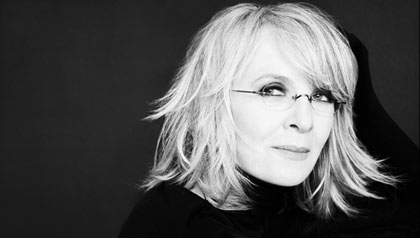Staying Fit


Diane Keaton couldn’t handle her first glimpse of her mother’s inner turmoil. It was the mid-1970s, and the lovably scattered actress — born January 5, 1946 — was riding high after star turns in two recent Godfather movies and three Woody Allen comedies. On a visit to her parents’ home in Santa Ana, California, Keaton recalls, “I found something I’d never seen. It was some kind of, I don’t know, sketchbook.”
On its cover was a mysterious title — It’s the Journey That Counts, Not the Arrival — and a collage of family photos assembled by her creative, then-54-year-old mother, Dorothy Deanne Keaton Hall. Inside were Dorothy’s unvarnished thoughts about her 31-year marriage to a power-company engineer named Jack Hall. Addressing “you, the possible reader in the future,” Dorothy warned that her entry of August 2, 1976, would take “courage” to read: It recounted a blowup in which she had called Jack “You frigin’ bastard” and ended with her fuming, “God, who the hell does he think he is?”


AARP Membership— $12 for your first year when you sign up for Automatic Renewal
Get instant access to members-only products and hundreds of discounts, a free second membership, and a subscription to AARP the Magazine.
“This was raw, too raw,” Keaton recalls in her new memoir, Then Again. “I didn’t want to know about an aspect of Mother’s and Father’s life that could shatter my perception of their love. I put it down…and did not open another one of her 85 journals until she died some 30 years later.”


Glimpses of a Funny Girl
Remember when Diane Keaton dated Al Pacino? See all the stages of her life: the men, the movies, the family. Watch
By the time of Dorothy’s death from Alzheimer’s in September 2008, Keaton had watched her mother struggle with that “strange and cruel disease” for more than 15 years. Steeling herself to learn more about her mother’s personal life — at 63, Keaton had just begun toying with the notion of writing a memoir herself — she began to dip into Dorothy’s journals. What she found there, says Keaton, helped her understand that her mother’s “most alluring trait was her complexity”: An aspiring writer and photographer who had shelved her career ambitions to raise four children in Santa Ana, California, Dorothy came to life between the lines of her sketchbooks as a woman with “a poet’s appreciation of language” and “an artist struggling to find a medium,” according to her daughter.
“From the outside looking in,” Keaton confides, “we lived completely different lives. She was a housewife and mother who dreamed of success; I am an actor whose life has been — in some respects — beyond my wildest dreams. Comparing two women with big dreams who shared many of the same conflicts and also happened to be mother and daughter is partially a story of what’s lost in success contrasted with what’s gained in accepting an ordinary life. I was an ordinary girl who became an ordinary woman, with one exception: Mother gave me extraordinary will. It didn’t come free.”
Some of the journal entries were eerily prescient of Dorothy’s fate: In a 1975 passage lamenting the “waves of insecurity” that assailed her, for example, Dorothy had written, “I’m no one to anyone. People look at me and see a midlife woman on the downhill slide. 55 is approaching. My brain is getting thinner. If there’s one thing I don’t want to lose, it’s my ability to think.”

































































More From AARP
Morning Glory
In a new romantic comedy, the grownups steal the show.